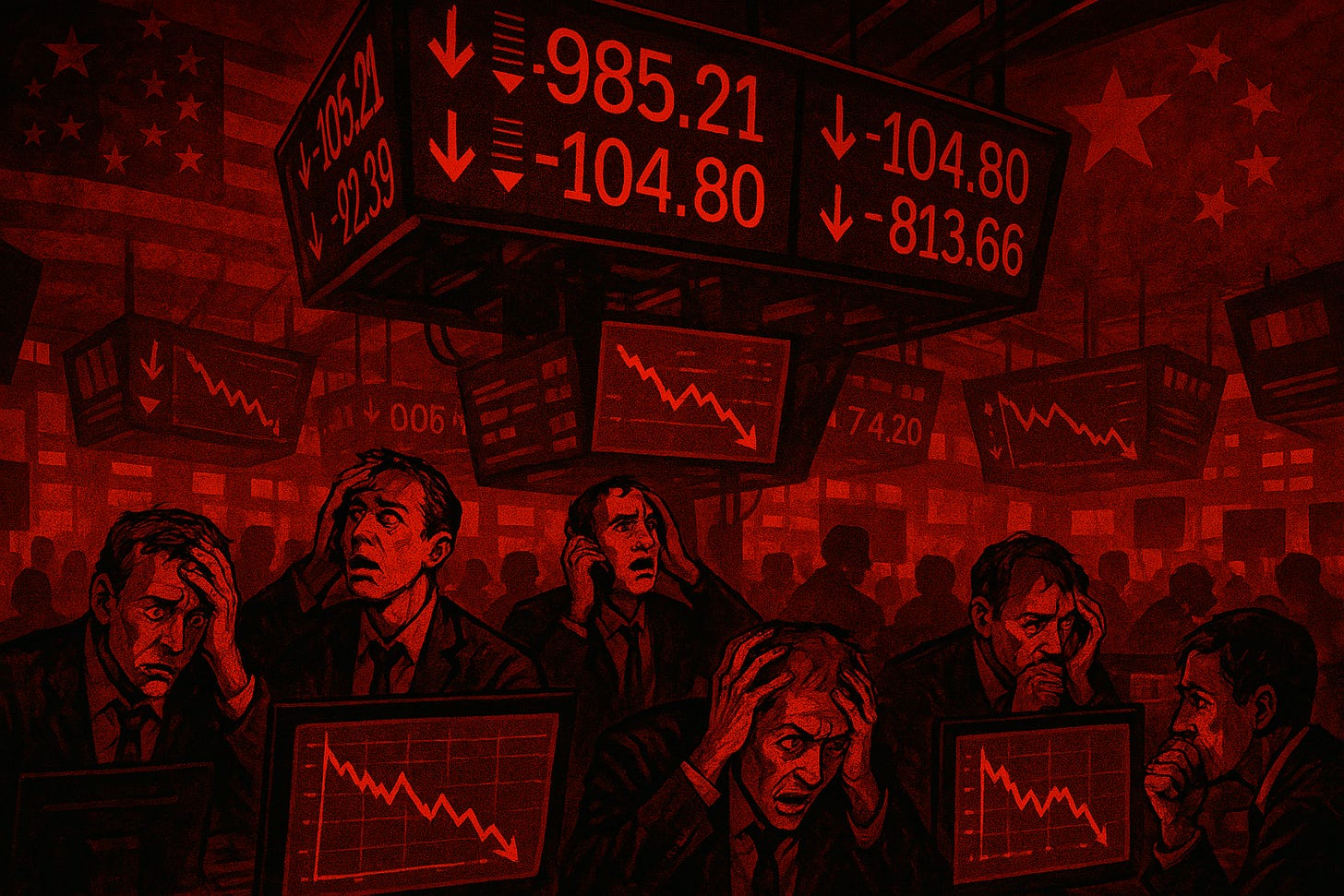Behind Today's Market Meltdown
Tariffs, Trump, and the Fear Factor
April 4, 2025—a date investors won't soon forget. Wall Street watched helplessly as the Dow plunged nearly 2,000 points, and the S&P 500 and Nasdaq each sank over 5%, marking their worst single-day declines since the pandemic-induced chaos of 2020. The dramatic sell-off wiped out over $4 trillion in market value in just two days.
But why? What triggered this sudden and steep decline?
In short: fear.
Just days earlier, President Trump announced a sweeping new tariff regime—the steepest trade barriers the United States has erected in over a century. A universal 10% import tariff, alongside punitive rates of up to 60% for certain countries like China, ignited immediate concerns over escalating costs, disrupted global supply chains, and retaliatory measures.
China didn't wait long. By Friday morning, they responded with aggressive 34% tariffs on U.S. goods. Suddenly, investors saw not just a trade skirmish, but the beginnings of an all-out global trade war.
In our recent podcast, The Future of American Jobs: AI, Automation & Economic Upheaval, we explored precisely this intersection of tariffs and economic volatility. As discussed, tariffs might sound appealing as a tool to revive American manufacturing jobs, but in reality, they often spark economic uncertainty—raising costs, triggering inflation, and squeezing consumer wallets.
Today's market plunge vividly illustrated these points. Tech giants like Apple, Nvidia, and Amazon—all with significant stakes in the Chinese market—tumbled by 7% or more. Tesla, heavily dependent on its Chinese supply chains, fell around 10%. Boeing, a barometer for global trade, dropped nearly another 9.5%, continuing a steep descent triggered by trade fears.
Meanwhile, energy stocks reeled as oil prices plummeted, anticipating weakened global demand from the brewing trade conflict. Exxon Mobil and Chevron each lost around 8%, as crude oil prices fell to their lowest since 2021.
Federal Reserve Chair Jerome Powell's comments today only deepened investor anxiety. Powell admitted that the newly imposed tariffs were "larger than expected," acknowledging that they could simultaneously fuel inflation and slow economic growth. Investors hoping for a swift Fed intervention were left disappointed—Powell indicated no immediate rate cuts were forthcoming, leaving markets without their hoped-for lifeline.
All of this paints a clear picture: tariffs meant to strengthen American industry instead stirred a volatile mix of fear, uncertainty, and potential economic harm. As we detailed extensively in our research report Automation, Tariffs, and Layoffs: The Future of US Manufacturing (2025–2035), such policies risk triggering unintended consequences that may outweigh their short-term benefits.
Today’s market meltdown sends a powerful message. Policymakers must tread carefully. Trade wars, tariffs, and fear-driven decisions carry profound implications not just for stock prices, but for American livelihoods and global stability.
Stay tuned. In Part 2 of our series, we'll explore why bringing manufacturing back home might not mean bringing jobs back—and what that means for American workers in an increasingly automated economy.


